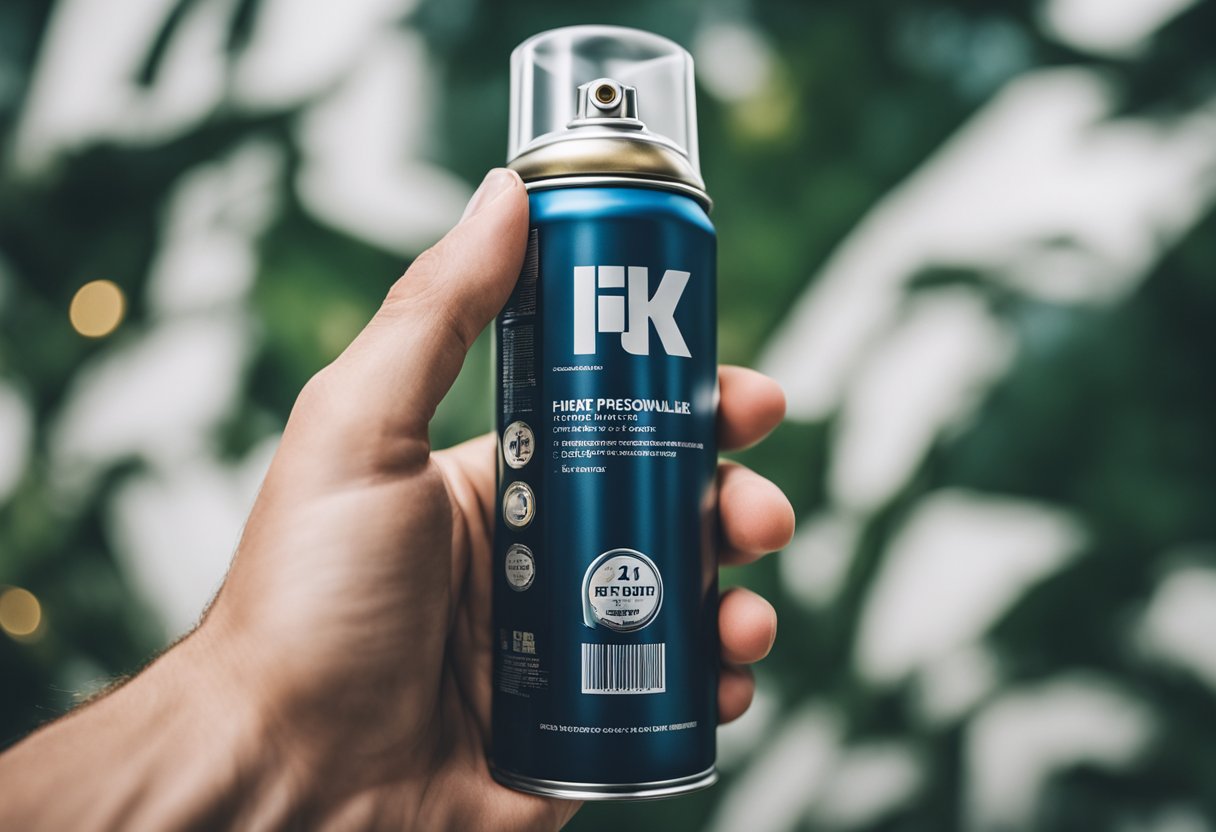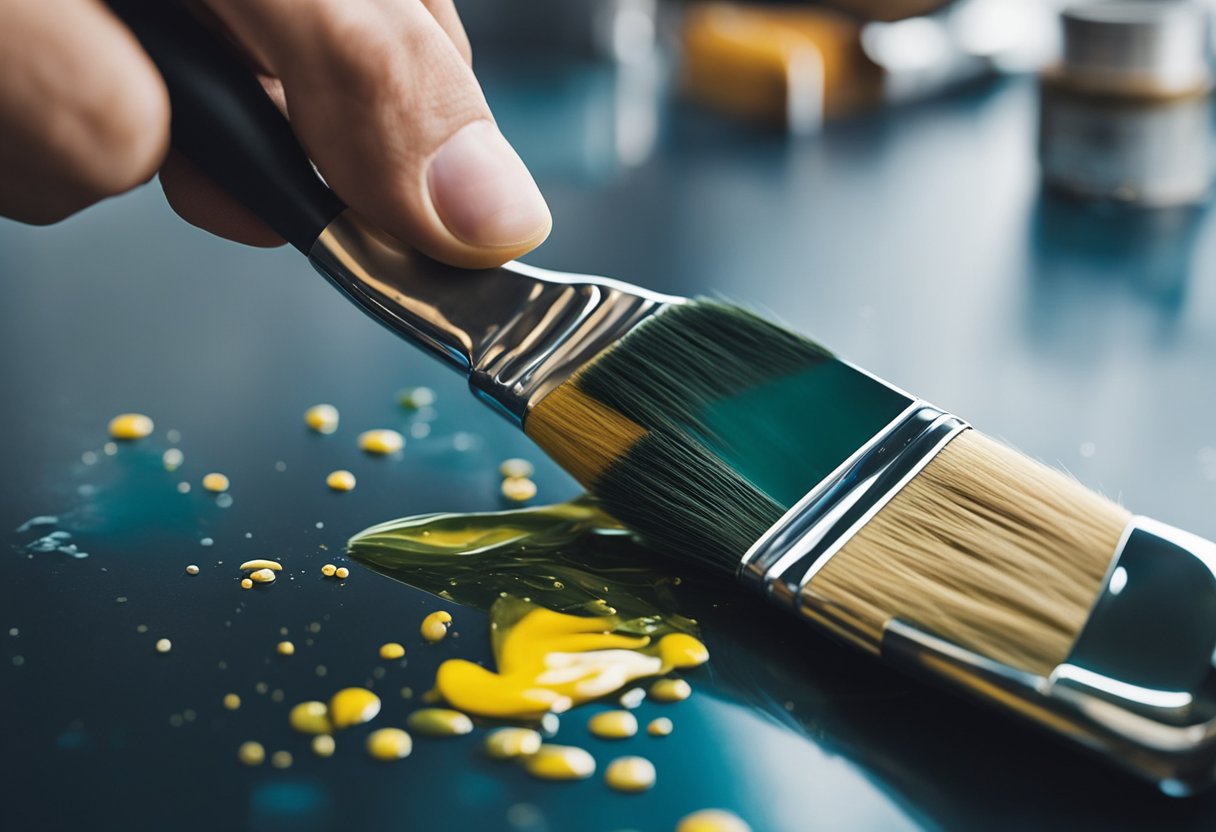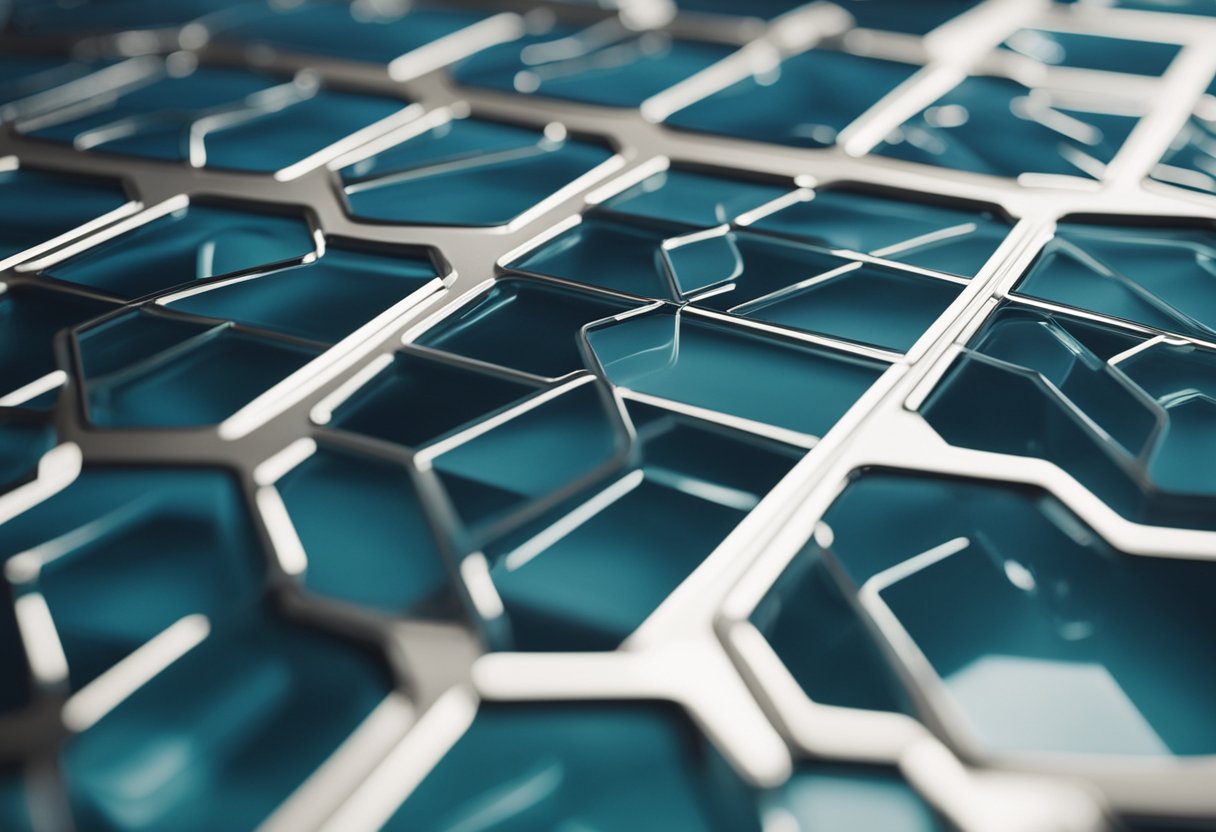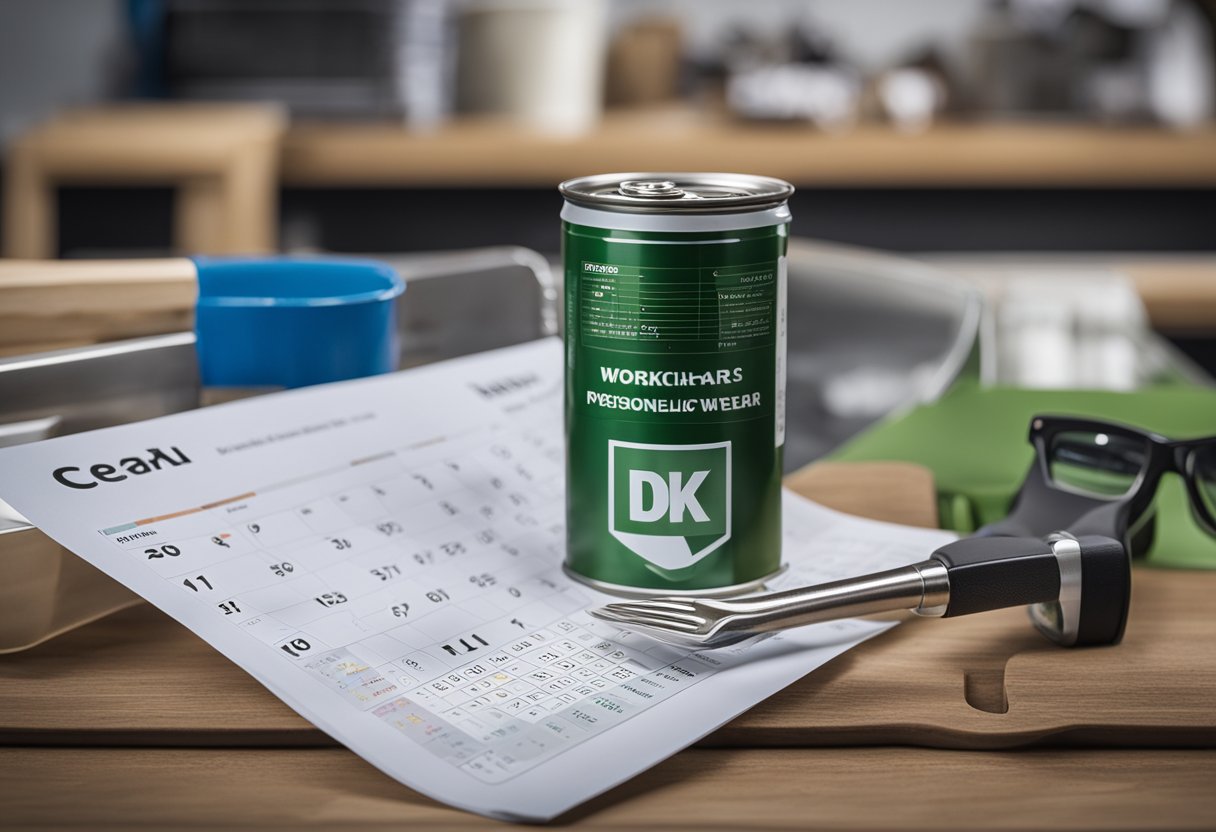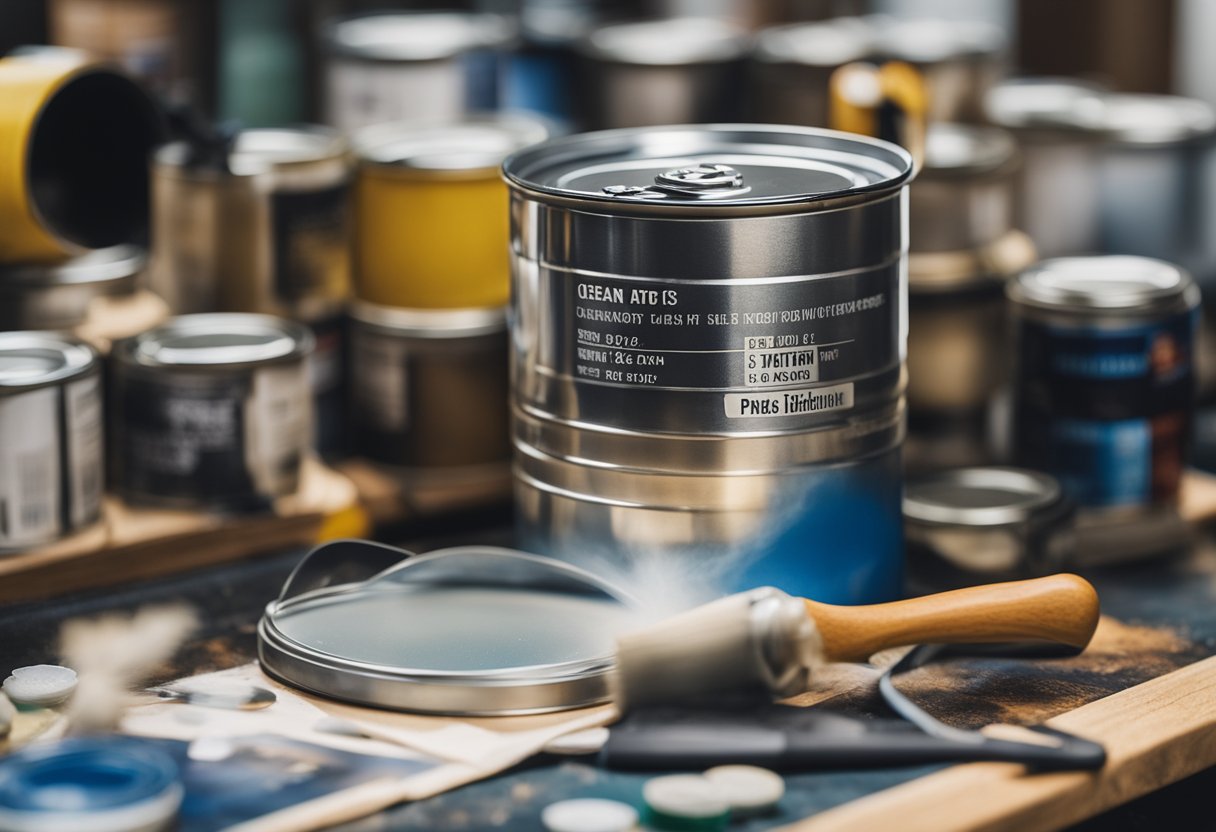Can I clear coat after a week? This is a common question asked by many car owners who are looking to protect their vehicle’s paint job. Clear coat is a type of paint that is applied over the base coat to provide a protective layer that can help prevent damage from UV rays, weather, and other environmental factors. While it is generally recommended to apply clear coat within 24 hours of painting, there are situations where you may need to wait longer before applying clear coat.
Understanding clear coats is an important part of maintaining the appearance of your vehicle. Clear coat is a type of paint that is applied over the base coat to provide a protective layer that can help prevent damage from UV rays, weather, and other environmental factors. There are many different types of clear coat available, each with its own set of advantages and disadvantages. It is important to choose the right type of clear coat for your vehicle based on your specific needs and budget.
Preparation before applying clear coat is crucial to achieving a high-quality finish. This includes cleaning and sanding the surface of the vehicle to ensure that the clear coat adheres properly. It is also important to choose the right type of clear coat for your vehicle based on your specific needs and budget. By taking the time to properly prepare your vehicle and choose the right type of clear coat, you can help ensure that your vehicle’s paint job looks great for years to come.
Key Takeaways
- Understanding clear coats is important for maintaining the appearance of your vehicle.
- Proper preparation before applying clear coat is crucial to achieving a high-quality finish.
- Choosing the right type of clear coat for your vehicle based on your specific needs and budget is essential.
Understanding Clear Coats
As a car owner, you want your vehicle to look its best for as long as possible. One way to achieve this is by applying a clear coat. A clear coat is a type of paint that provides an extra layer of protection to the vehicle’s paint. It acts as a barrier between the paint and the elements, protecting the paint from fading, chipping, and other types of damage.
A clear coat is a high-quality, protective layer that can significantly improve the durability of a vehicle’s paint job. It is available in different types, and the type of clear coat you choose can affect the level of protection it provides. Some clear coats are designed to provide a high level of protection against UV rays, while others are more durable and resistant to scratches and chips.
When it comes to applying a clear coat, timing is critical. While you may be tempted to apply the clear coat after a week, it is not always the best option. According to some experts, the ideal time to apply the clear coat is within 24 hours of painting. This is because the clear coat will not adhere as well to the paint if it has had time to dry and cure. However, some clear coats can be applied after a week, but it is not recommended.
In conclusion, a clear coat is an essential part of any vehicle’s paint job. It provides an extra layer of protection that can significantly improve the durability of the paint. If you are planning to apply a clear coat, it is essential to choose the right type of clear coat and apply it at the right time. This will ensure that your vehicle’s paint job looks great for years to come.
Preparation Before Applying Clear Coat
https://www.youtube.com/watch?v=CmL6OpJ7M98&embed=true
Before applying clear coat, it is important to prepare the surface properly. This will ensure that the clear coat adheres well to the base coat and provides a smooth and even finish. Here are some important steps to follow:
Clean the Surface
The first step is to clean the surface thoroughly. Any dirt, dust, or debris on the surface can affect the adhesion of the clear coat. Use a mild detergent and water to clean the surface. Rinse it well and let it dry completely before proceeding.
Surface Preparation
The next step is to prepare the surface. If the surface has any imperfections, such as scratches or dents, they should be repaired before applying clear coat. Use a filler or primer to fill in any imperfections and sand the surface until it is smooth.
Masking
Masking is an important step to protect any areas that you don’t want to be coated with clear coat. Use masking tape and paper to cover areas such as windows, trim, and other parts of the vehicle that you don’t want to be coated.
Color and Base Coat
It is important to choose the right color and base coat before applying clear coat. The base coat should be allowed to dry for the recommended time before applying clear coat. Applying clear coat too soon can cause the base coat to lift or bubble.
Primer
If you are applying clear coat to a surface that has not been painted before, it is important to use a primer. The primer will help the clear coat adhere better to the surface and provide a smoother finish.
By following these steps, you can ensure that the surface is properly prepared before applying clear coat. This will help you achieve a smooth and even finish that will last for years to come.
Application Process and Techniques
https://www.youtube.com/watch?v=-Kpl1mXwHfQ&embed=true
When it comes to applying clear coat after a week, it is important to follow the proper application process and techniques to ensure an even and smooth finish. Here are some tips to help you achieve a successful clear coat application:
Sanding
Before applying the clear coat, it is important to sand the surface of the painted area to ensure that it is smooth and free of any imperfections. Use fine sandpaper to gently sand the surface, making sure to remove any rough spots or bumps. This will help the clear coat adhere properly to the surface and create a smooth finish.
Applying Clear Coat
When applying the clear coat, it is important to use the proper application technique. Spray painting is the most common method for applying clear coat, but it is important to use even and consistent strokes to avoid any drips or uneven areas. Hold the can or spray gun about 6 to 8 inches away from the surface and apply the clear coat in thin, even layers.
Waiting Period
After applying the clear coat, it is important to wait for the recommended waiting period before handling or using the painted surface. This waiting period can vary depending on the type of clear coat and the manufacturer’s instructions, so be sure to read the label carefully and follow the recommended wait time.
Overall, applying clear coat after a week is possible, but it requires proper preparation, technique, and patience. By following these tips, you can achieve a smooth and even finish that will protect your painted surface for years to come.
Post Application Considerations
After applying the base coat, it is essential to take some post application considerations into account before applying the clear coat. Here are some important things to keep in mind:
Drying and Curing
The base coat needs to be completely dry before applying the clear coat. The drying time will depend on the type of paint used and the weather conditions. It is recommended to wait at least 24 hours before applying the clear coat to ensure that the base coat is fully dry and cured. The curing process can take up to several weeks, and it is important to wait until the paint is fully cured before exposing it to harsh weather conditions.
Temperature and Humidity
The temperature and humidity levels can affect the drying and curing time of the paint. It is recommended to apply the clear coat when the temperature is between 60°F and 80°F and the humidity is below 60%. High humidity levels can cause the paint to dry slower, which can prolong the curing process.
Recommended Waiting Time
It is recommended to wait at least 30 minutes after applying the base coat before applying the clear coat. This waiting time will allow the base coat to settle and dry properly, ensuring a smooth and even finish. Waiting too long can cause the base coat to cure, which can make it difficult for the clear coat to adhere properly.
Curing Time
The curing time for the clear coat can vary depending on the type of paint used and the weather conditions. It is recommended to wait at least 24 hours before exposing the paint to harsh weather conditions or washing the car. Waiting longer can ensure that the clear coat is fully cured and will provide maximum protection to the paint.
In conclusion, it is important to follow the recommended durations and timing for applying the clear coat after the base coat has been applied. Waiting for the base coat to dry and cure properly, applying the clear coat in optimal weather conditions, and allowing the clear coat to fully cure will ensure a smooth and glossy finish that will protect the paint for years to come.
Challenges and Solutions
When it comes to clear coating a car, there are several challenges that one might face. However, with the right solutions, these challenges can be easily overcome.
Dirt, Scratches, and Imperfections
One of the most common challenges when it comes to clear coating a car is the presence of dirt, scratches, and imperfections on the surface. These can cause the clear coat to not adhere properly and result in a poor finish.
To avoid this, it is important to thoroughly clean and prep the surface before applying the clear coat. This includes washing the car, sanding any imperfections, and removing any debris.
Uneven Finish and Peeling
Another challenge that can arise when clear coating a car is an uneven finish or peeling. This can be caused by a variety of factors, including improper application, humidity, and temperature.
To prevent this, it is important to apply the clear coat in a controlled environment and to follow the manufacturer’s instructions carefully. Additionally, wet sanding can help smooth out any imperfections and ensure a smooth finish.
Fading and Rain Damage
Over time, clear coat can begin to fade or become damaged due to exposure to the elements, such as rain and UV rays. This can cause the clear coat to lose its gloss and protective properties.
To restore the clear coat, it may be necessary to reapply a new coat of clear. However, it is important to properly prep the surface and ensure that the new coat adheres properly to prevent any cracking or peeling.
In conclusion, while there are several challenges that can arise when clear coating a car, they can be easily overcome with the right solutions and techniques. By properly cleaning and prepping the surface, applying the clear coat in a controlled environment, and addressing any imperfections or damage, one can achieve a beautiful and long-lasting finish.
Maintenance and Long-Term Care
https://www.youtube.com/watch?v=vWYyw-yKM3A&embed=true
As someone who has been in the automotive painting industry for several years, I can confidently say that clear coating is an essential step in achieving a glossy finish and ensuring that the paint job stays intact for a long time. However, the question of whether you can clear coat after a week is a bit tricky.
While it is possible to clear coat after a week, it is not recommended. The longer you wait, the less likely the clear coat will adhere to the paint, resulting in a less glossy finish. Therefore, it is best to apply the clear coat within 24 hours of painting.
Once you have applied the clear coat, it is essential to maintain the finish quality to ensure that it lasts for a long time. Regular waxing and polishing can help maintain the glossy finish of the clear coat. It is also essential to be mindful of the humidity levels when waxing or polishing, as high humidity can lead to peeling clear coat.
In addition to waxing and polishing, it is crucial to use proper painting techniques to achieve a flawless finish. This includes prepping the work surface meticulously and ensuring that the environment is clean and dust-free.
Overall, while it is possible to clear coat after a week, it is not recommended if you want the glossiest finish and a long-lasting clear coat. By following proper maintenance and long-term care techniques, you can ensure that your clear coat lasts for years to come.
Understanding Clear Coat After a Week
When it comes to applying clear coat after a week, there are a few things to keep in mind. First and foremost, the drying time of the paint layer is critical. If the paint layer is not fully dry, applying clear coat can trap contaminants, dust, or solvents, which can ruin the finish. Therefore, it is essential to wait until the paint layer is fully dry before applying clear coat.
Another thing to consider is the environmental conditions during painting, which can affect the finish. If the painting is done in a dusty or humid environment, it can affect the finish quality. Therefore, it is best to paint in a clean, dry, and well-ventilated area.
When applying clear coat after a week, it is essential to scuff the paint with some fine sandpaper to create a surface that the clear coat can adhere to. Applying clear coat to a smooth surface can cause the clear coat to peel or flake off. Therefore, it is crucial to scuff the paint with fine sandpaper before applying the clear coat.
It is also essential to consider the number of clear coats to apply. Applying multiple layers of clear coat can enhance the finish, but it is important to ensure that the clear coat is compatible with the paint type and manufacturer. The number of clear coats to apply depends on the precision and components of the painting process.
Lastly, it is important to note that ultraviolet (UV) rays can cause the clear coat to fade or yellow over time. Therefore, it is crucial to use a clear coat with UV protection to prevent fading or yellowing. Additionally, adding hardeners to the clear coat can help it withstand UV rays and other environmental factors.
Overall, applying clear coat after a week can be done successfully if the paint layer is fully dry, the surface is scuffed, and the clear coat is compatible with the paint type and manufacturer.
Frequently Asked Questions
How long should I wait before applying clear coat spray paint?
It is recommended to wait 15-20 minutes between applying base coat and then 20-30 minutes after applying the last base coat before applying clear coat. However, the wait time can vary depending on the specific product being used. Always refer to the manufacturer’s instructions for the recommended wait time.
Can I apply clear coat to car touch up after a week?
Yes, you can apply clear coat to car touch up after a week. However, it is important to make sure the touch-up paint has fully cured before applying the clear coat. This can take up to a week or longer, depending on the type of paint used. Always refer to the manufacturer’s instructions for the recommended curing time.
What is the maximum time between clear coats?
The maximum time between clear coats can vary depending on the specific product being used. Some clear coats have a limited window of time in which they can be applied, while others can be applied at any time. Always refer to the manufacturer’s instructions for the recommended wait time between coats.
Can I spray clear coat over existing clear coat?
Yes, you can spray clear coat over existing clear coat. However, it is important to make sure the existing clear coat is fully cured before applying the new coat. If the existing clear coat is still tacky or soft, the new coat may not adhere properly. Always refer to the manufacturer’s instructions for the recommended curing time.
How do I apply clear coat with a spray can?
To apply clear coat with a spray can, first make sure the surface is clean and dry. Shake the can well before use and hold it approximately 8-10 inches away from the surface. Apply thin, even coats, overlapping each pass slightly. Allow each coat to dry for the recommended time before applying the next coat. Always refer to the manufacturer’s instructions for the recommended number of coats and drying time.
How long do I leave base coat before applying lacquer?
The amount of time you should leave the base coat before applying lacquer can vary depending on the specific product being used. Some products require you to apply the lacquer while the base coat is still wet, while others require you to wait until the base coat is dry. Always refer to the manufacturer’s instructions for the recommended wait time.

Hi, I’m Sal Muller of Tooltrip.com. My DIY experience led me to understand essential power tools for home projects. Tooltrip.com guides enthusiasts and professionals in choosing right tools for any job. I provide concise top tool reviews for easier, efficient DIY.

